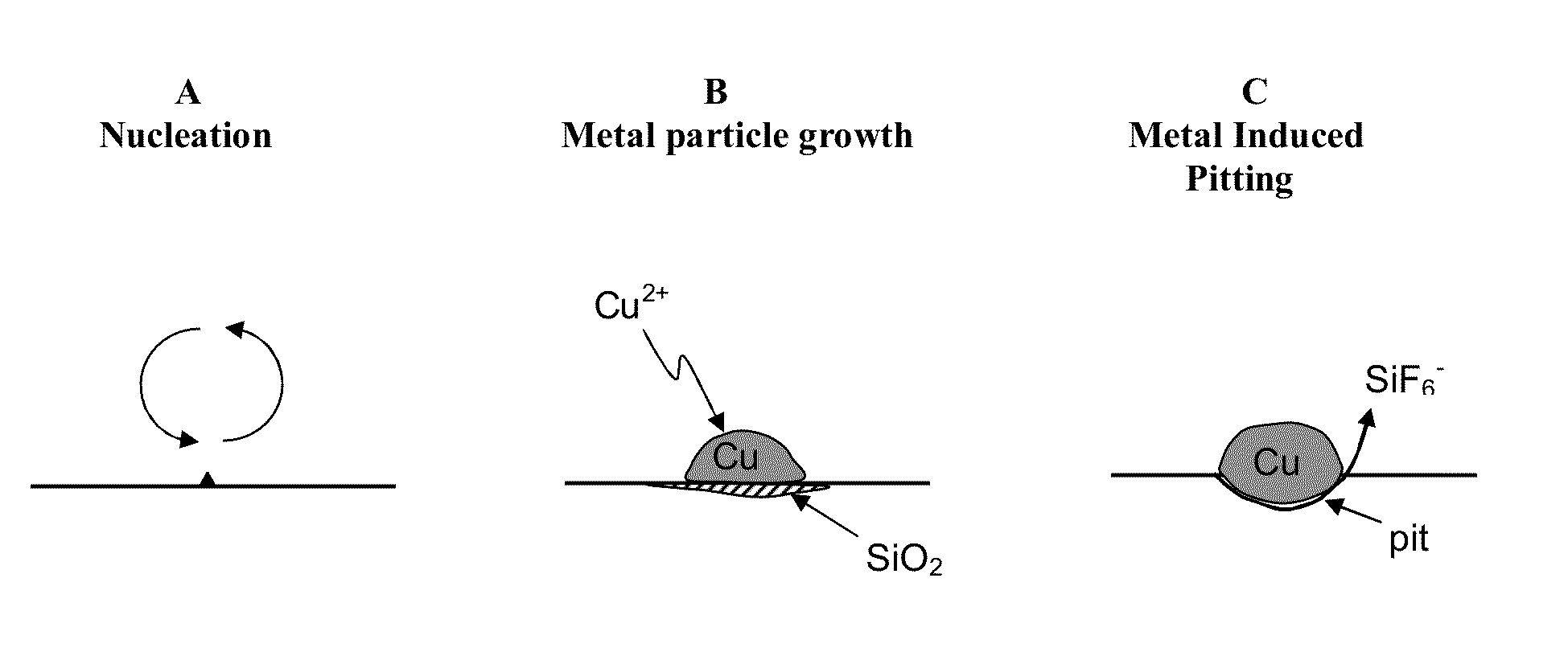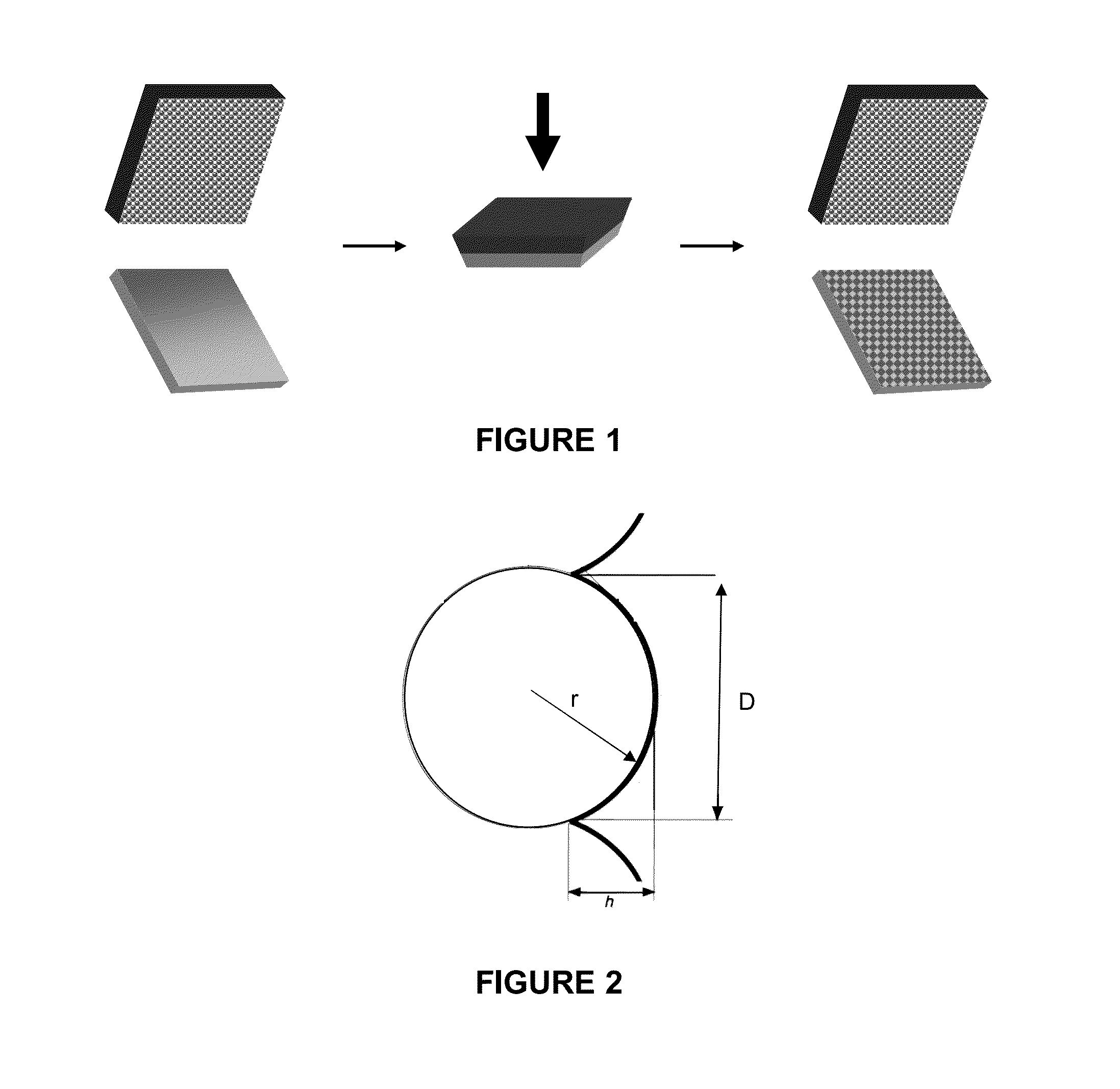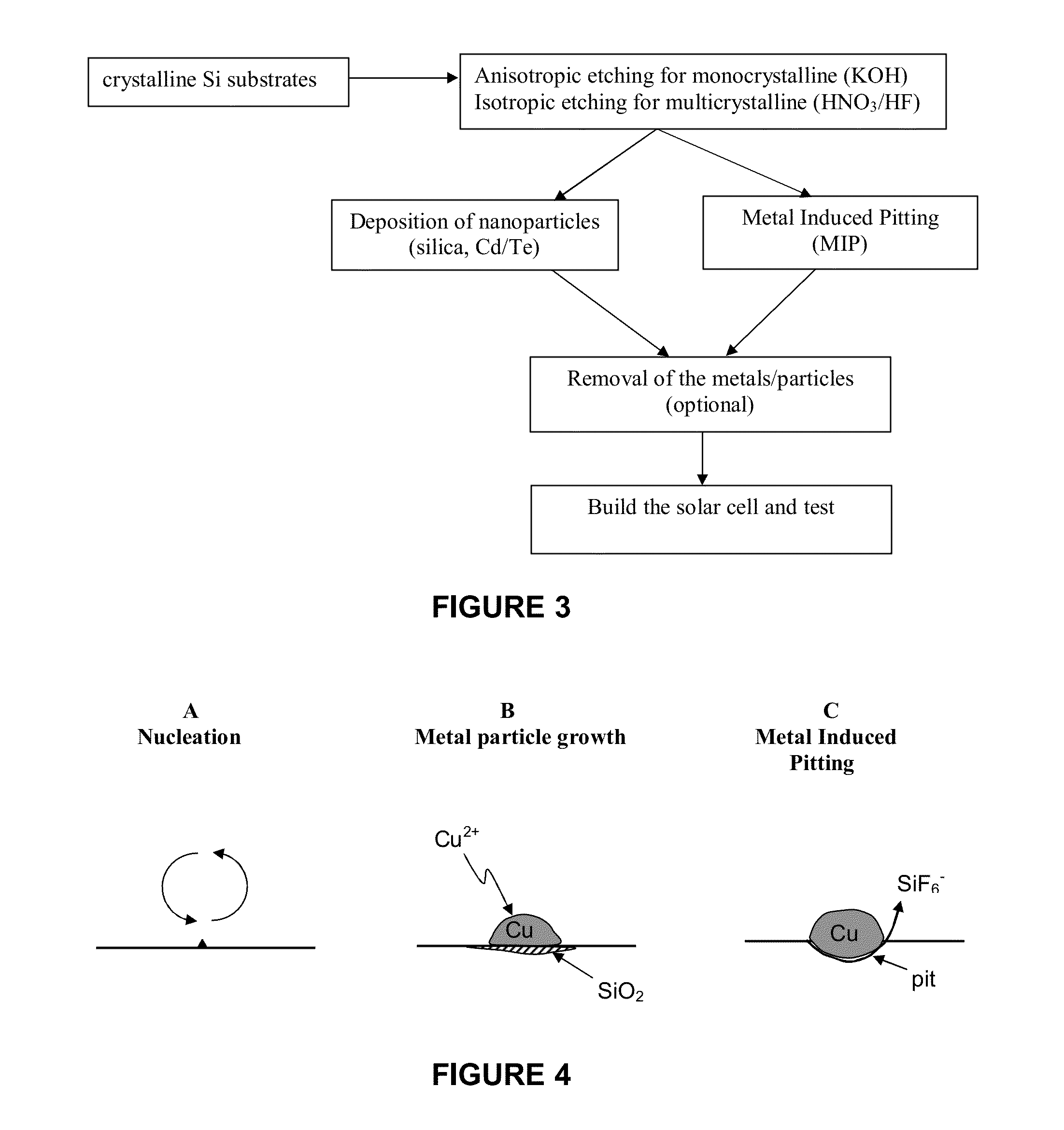Methods of texturing surfaces for controlled reflection
a technology of surface recombination velocity and control surface, which is applied in the direction of semiconductor/solid-state device manufacturing, electrical equipment, and efficient single-crystalline silicon-based devices, especially of large surface area, can solve the problems of low cell conversion efficiency, difficult and expensive production, and high surface recombination velocity of electrons and holes
- Summary
- Abstract
- Description
- Claims
- Application Information
AI Technical Summary
Benefits of technology
Problems solved by technology
Method used
Image
Examples
example 1
[0079]To demonstrate the efficacy of the compositions of the first aspect for the etching of silicon, formulations were prepared and silicon coupons were immersed in said formulations and the etch rate determined.
[0080]In a first example, a formulation including 11 wt % KOH, 1 wt % DSS, 0.01 wt % metal salt, and water were prepared, wherein the metal salts included Ba(OH)2, Ba(NO3)2, and lanthanum chloride. A control was prepared that had no metal salt. The silicon coupon was immersed in each formulation for 35 minutes at 90° C. The results of the silicon etch are shown in FIG. 1, wherein it can be seen that the presence of barium salts in the composition increased the etch rate of the silicon surface. Although not wishing to be bound by theory, it is surmised that the decrease in etch rate over time is a function of increasing silicate concentration in the bath and / or a decrease in KOH concentration over time.
[0081]Although barium salts are useful additives with regards to the etch...
PUM
 Login to View More
Login to View More Abstract
Description
Claims
Application Information
 Login to View More
Login to View More - R&D
- Intellectual Property
- Life Sciences
- Materials
- Tech Scout
- Unparalleled Data Quality
- Higher Quality Content
- 60% Fewer Hallucinations
Browse by: Latest US Patents, China's latest patents, Technical Efficacy Thesaurus, Application Domain, Technology Topic, Popular Technical Reports.
© 2025 PatSnap. All rights reserved.Legal|Privacy policy|Modern Slavery Act Transparency Statement|Sitemap|About US| Contact US: help@patsnap.com



